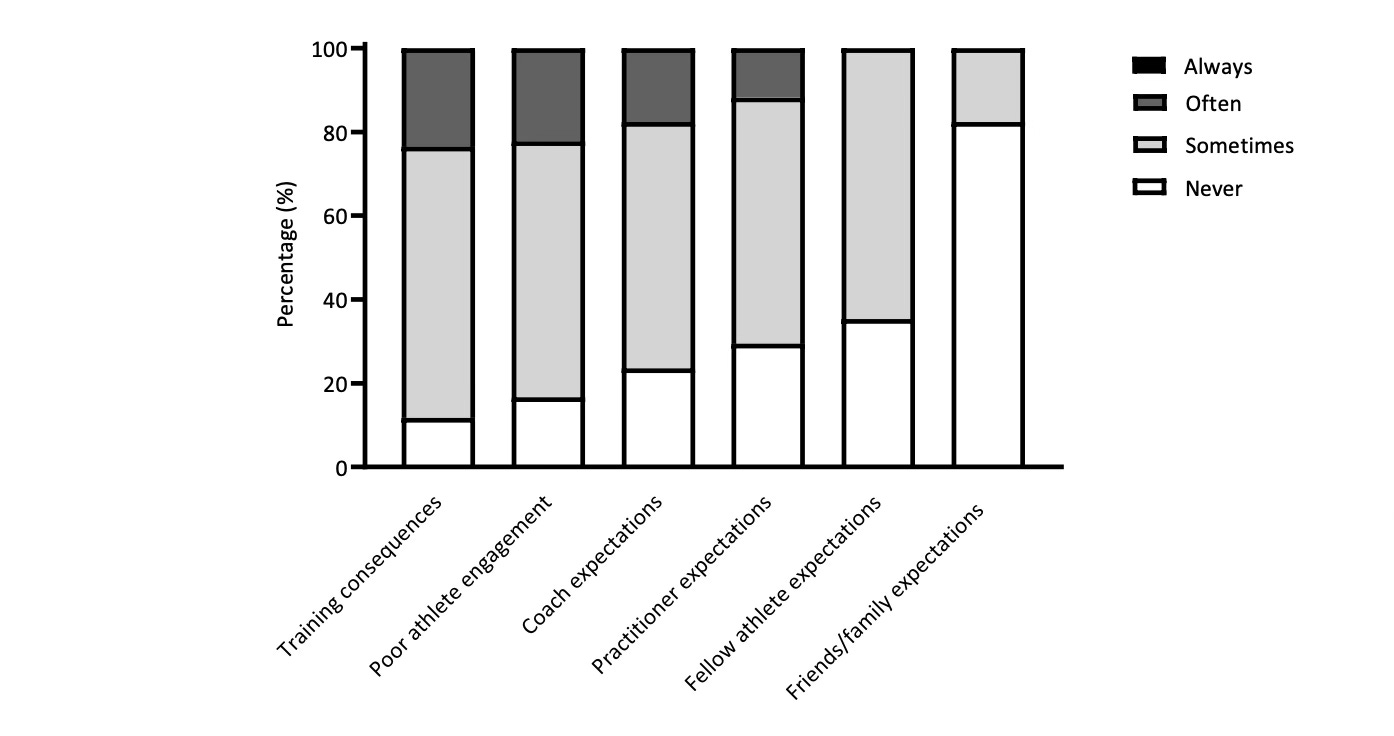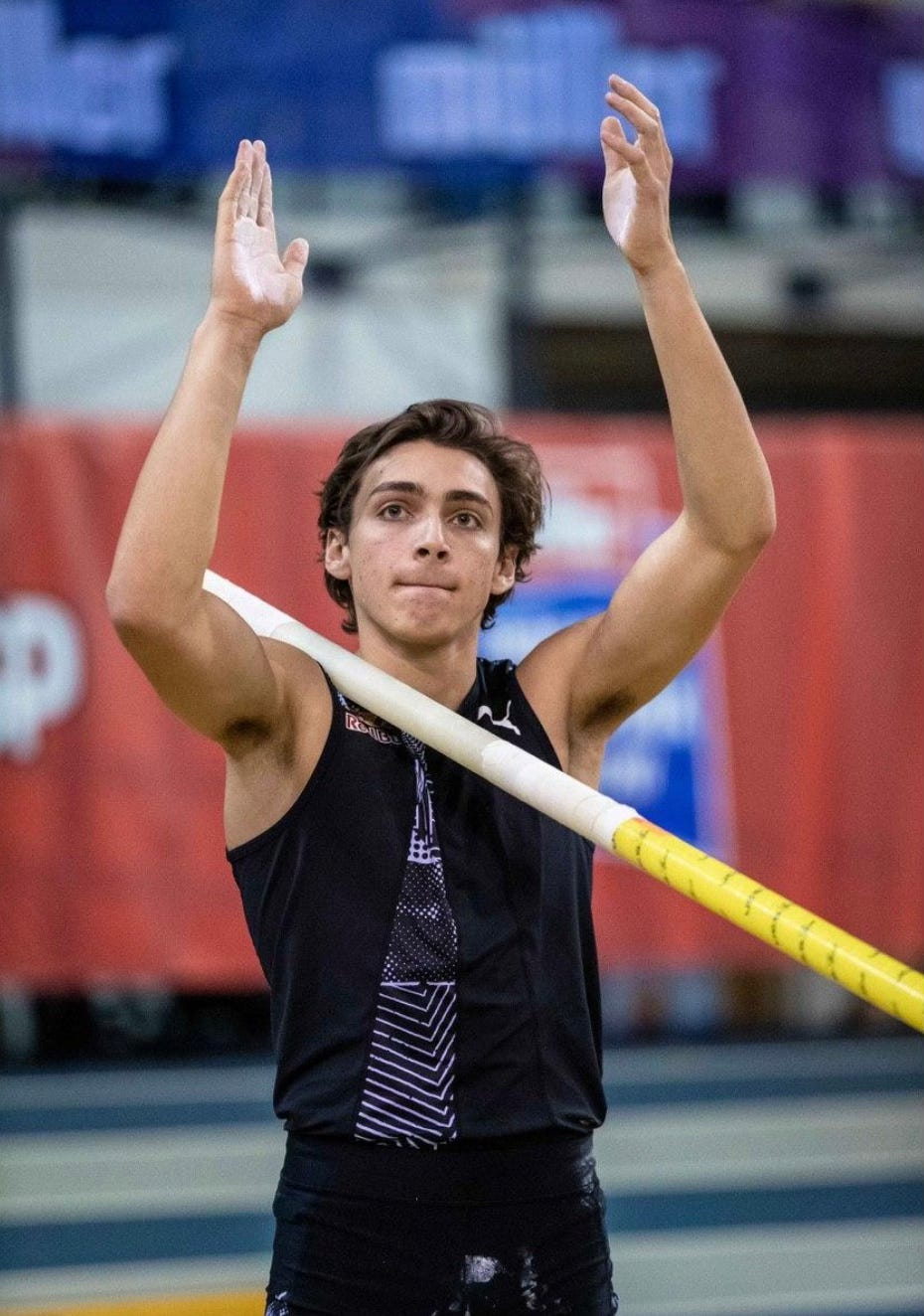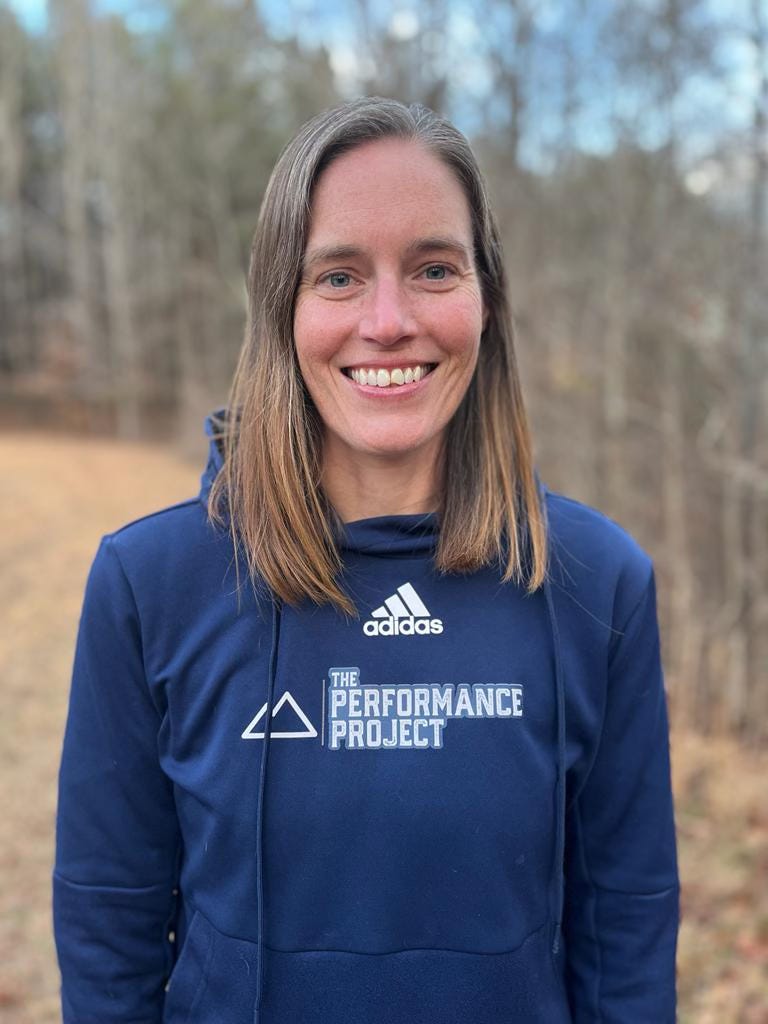WELCOME😊
The Athletic Performance Insider newsletter is published weekly and presents up-to-date research, exclusive interviews, practical tips, and the latest industry news and trends.
This week, we share the story of Rebecca Johansson, who graduated with a PhD in exercise science in 2020. After graduating, she dipped her toe in the waters of academia. However, her heart led her towards a coaching career, where she found fulfilment in guiding athletes to their fullest potential. Her commitment to applying scientific principles to athletic performance has shaped her career, culminating in the founding of her coaching business, The Performance Project.
This edition also includes papers on the pitfalls of athlete monitoring programmes, measures of readiness for training, and an investigation into the rate of adaptation of muscles and tendons. Additionally, there is a paper that discusses the relationship between exercise and immune function, which may be of interest to those looking to stay up-to-date on the latest research in this field.
If you want the newsletter delivered to your mailbox every Tuesday, press the subscribe button.
RESEARCH🧐
Is athlete monitoring losing its edge? Unveiling the socio-environmental factors at play?
Neupert, E., Holder, T., Gupta, L. & Jobson, S. A. More than metrics: The role of socio-environmental factors in determining the success of athlete monitoring. J. Sports Sci. 42, 323–332 (2024).
This study investigates the role of socio-environmental factors in the success of athlete monitoring systems (AMS) and their impact on athlete performance and adherence. Utilising a survey distributed across various sporting organisations, the research highlights the mixed feelings towards punitive measures for poor AMS adherence, such as training privilege removal and the underutilisation of AMS due to a lack of engagement from world-class athletes. The findings suggest that for AMS to be effective, sporting organisations must consider both socio-environmental and metric-related factors. The study highlights the importance of a balanced approach to athlete monitoring, advocating for integrating AMS within a broader decision-making framework rather than viewing it as a standalone solution for performance optimisation and injury prevention.
Figure 1: Practitioners’ perceptions of what factors primarily influenced the honesty of athlete reporting in an AMS.
What are we missing when we measure athlete readiness?
Guthrie, B., Jagim, A. R. & Jones, M. T. Ready or Not, Here I Come: A Scoping Review of Methods Used to Assess Player Readiness Via Indicators of Neuromuscular Function in Football Code Athletes. Strength Cond. J. 45, 93–110 (2023).
This study defines physical readiness as “a state of dissipated fatigue and associated physiological adaptation”. This definition encompasses an athlete's recovery and preparedness for performance, considering the external loads (i.e. the dose of training) and the internal loads (i.e. the physiological response to training).
This scoping review aimed to assess player readiness through indicators of neuromuscular function in response to training load among football-code athletes. The review included 31 studies, highlighting rugby and soccer as the most examined sports. Common methods of assessing systemic readiness were countermovement jump and sprint testing, with limited evidence supporting structural (i.e. a focus on assessing specific body structures, such as joints or tissues) and tissue-specific monitoring tools (i.e. using tensiomyography to evaluate the contractile properties of individual muscles)
The findings suggest that player readiness assessment strategies have evolved with technological and analytical advancements. However, future research should go beyond only focusing on physical readiness and encompass a broader range of populations, including youth and women athletes.
Are we training our muscles and tendons all wrong?
Lambrianides, Y., Epro, G., Arampatzis, A. & Karamanidis, K. Evidence of different sensitivity of muscle and tendon to mechano‐metabolic stimuli. Scand. J. Med. Sci. Sports 34, e14638 (2024).
This study investigated the differential responses of muscle and tendon to mechano-metabolic stimuli, focusing on the triceps surae muscle-tendon unit (MTU) during a 12-week training intervention. Twelve young adults performed unilateral isometric cyclic plantarflexion contractions at varying MTU lengths to induce high metabolic stress and mechanical load. The research aimed to understand whether muscles and tendons adapt differently to these stimuli, potentially affecting injury risk and performance.
The findings confirmed that tendons are more sensitive to mechanical strain, showing increased stiffness and size only under high-strain conditions (dorsiflexed position). Conversely, muscles adapted similarly across conditions, suggesting a higher sensitivity to metabolic stress rather than mechanical load. This discrepancy indicates that muscles and tendons have distinct adaptation mechanisms, which could lead to imbalances within the MTU.
The study highlights the importance of tailored training programs to consider the differential adaptation rates of muscles and tendons to reduce the risk of overuse injuries. Understanding these dynamics can help design rehabilitation and conditioning programs, optimising muscle-tendon health and performance.
TRIVIA🫣
On Saturday, April 20th, 2024, superstar Swedish pole vaulter Mondo Duplantis broke his own world record by clearing 6.24 meters (20.47 feet). His previous record? 6.23 m, set last September, and 6.22 m before that. It’s by design: Duplantis gets a check (which can reach up to $100k) when he breaks the world record, so he raises the bar by one cm each time to maximise his earnings.
This playbook was written decades ago by the great Ukrainian pole vaulter Sergey Bubka. To collect as many checks from Nike as possible, Bubka broke his own record at least a dozen times between 1985 and 1994. During those nine years, the bar went all the way from 6.00m to…6.14m.
Matty Merritt, Cassandra Cassidy, Sam Klebanov, Adam Epstein, Neal Freyman in the Morning Brew
PRACTICAL 🤔
Is your knowledge on acute respiratory infections and the immune response to exercise a bit rusty? No problem; this paper will bring you up to date.
Agustiningsih, D. & Wibawa, T. Demystifying roles of exercise in immune response regulation against acute respiratory infections: A narrative review. Sports Med. Heal. Sci. 6, 139–153 (2024).
This narrative review explores the relationship between physical activity, immune response, and acute respiratory infections (ARIs). It highlights the established benefits of moderate-to-vigorous physical activity (MVPA) in preventing non-communicable diseases and mental health issues. However, the review points out that the role of exercise in preventing and managing ARIs remains inconclusive, with scientific debates ongoing. The authors delve into the "open window" hypothesis, which suggests that post-exercise periods may temporarily suppress the immune system, potentially increasing infection risk. The review identifies limitations in current research, including study design and measurement inconsistencies, and calls for more rigorous future studies to clarify exercise's effects on immune function and ARIs. The paper concludes that while exercise has regulatory benefits on the immune system, caution is needed in interpreting its impact on ARIs.
INTERVIEWS AND PROFILES🤝
Up close and personal - Rebecca Johansson
Name and qualifications
Rebecca Johansson (M.S. Exercise Physiology, University of Wisconsin-Madison, USA; PhD Exercise Science, University of Cape Town, South Africa)
Background and Introduction
I started swimming at the age of seven and fell in love with everything about sport. I continued swimming through college. After I graduated, I worked in politics for a couple of years. I found that I really missed being in a sporting environment, so I started coaching a youth swim team. I am still coaching sixteen years later, so I guess it was the right choice!
Motivation and Passion
When I first started coaching in 2008, I found that I was prescribing training based on my own experiences. I wanted to learn more about the science of exercise to improve my coaching skills. This is when I started my graduate studies in Exercise Science. I continued coaching part-time throughout my Master’s and PhD. I realised how beneficial it was to apply science in an athletic performance setting, and I knew I wanted to pursue this avenue long-term.
Many moments solidified my passion for working with athletes, but one that stands out is the Tri-Fit programme at the Sports Science Institute of South Africa. The programme helps adults finish their first triathlon. Many who joined the programme had a big fear of swimming, especially in open water. Seeing their confidence grow throughout the 12 weeks, culminating in a triathlon race with a mass swim in open water, was inspiring. I realised that the work we do can produce life-changing results.
Career Journey
After earning my Master’s degree at the University of Wisconsin-Madison I really thought I was done with graduate studies. I was doing a combination of coaching and tutoring student-athletes at a nearby University. As many of my friends suggested, I grew restless and wanted to pursue a PhD. Finding the University of Cape Town and deciding to pursue my PhD so far from home (USA) was a big turning point. It was ultimately the best decision ever. The other key turning point was completing my PhD just as the pandemic started in early 2020. There were so many opportunities that fell flat, and I was incredibly stressed. Then, I realized my PhD training gave me the skillset to solve any problem, and I started my own coaching business, The Performance Project. Four years on, I have learned valuable skills in entrepreneurship and coaching.
Challenges and Learning
I put a lot of pressure on myself after my PhD to go right into a postdoc position and follow a traditional academic journey. After only one week in a postdoctoral position, I felt it was not the right fit or decision. I remember calling Mike Lambert in a panic, unsure what to do. Firstly, he reminded me that this was not the first time this had happened, which was reassuring. The other powerful thing he told me was that my PhD was about developing a diverse skillset that could be applied in various settings. I then sat down and really thought about what setting I would have the most impact on and be the most satisfied. It became clear that coaching was the setting for me.
Memorable Experiences
With my current coaching business, The Performance Project, I have developed personal and long-term relationships with the athletes on the team. It’s not necessarily the athletic achievements that stand out to me. What stands out are all the times athletes go through really hard life challenges. Sport provides a supportive community in these instances as well as a coping technique. I try to support the athletes I coach through good times and bad.
Daily Routine and Work Ethic
As a business owner, no two days are the same anymore, which keeps it interesting. However, the key ingredients to every day are checking in with athletes over video calls and WhatsApp messages and reviewing their training files on TrainingPeaks. I also spend a lot of time creating social media content, writing blog articles, and talking to prospective athletes. My own exercise is also a key part of each day.
For the first two years of my business, I worked with a business coach, Sabiha Docrat. She provided guidance, structure, and motivation that helped me feel excited about the complexity of owning a business. The athletes on the team also motivate and inspire me every day.
Relationships with Athletes
This skill of establishing rapport and trust with athletes took many years for me to develop. I try to listen intently to what each athlete has to say. I approach my coaching from each athlete’s perspective rather than forcing them into a particular training philosophy. When athletes know you are invested in them and willing to learn about how they operate, rapport and trust follow.
I have been coaching many of the athletes on Team Performance Project for several years. I think these long-term relationships are meaningful, because you get to know them very well personally. You know about their family, career, life ups and downs. I feel lucky to have this career.
Adaptation and Innovation
This is more challenging in my current role as a business owner. I dedicate four hours each Monday to professional development and spend a few hours each weekend reading books and journal articles. I recently did a sports nutrition coaching qualification which helped improve my skills in that area. I also have key sports science researchers I follow and read the weekly Athletic Performance Insider newsletter!
Personal Connection to Sports
Swimming is my first love, but I mainly run these days. I love to run trails as it is lovely to be out in nature. I have learned to enjoy weightlifting as the benefits of this in middle age are well-researched.
Advice for Aspiring Professionals
Don’t wait for an opportunity to present itself. Be proactive in growing who you know. My life-changing opportunities all came from me reaching out to professionals or professors I was interested in. Simply asking for a brief meeting or volunteering somewhere can lead to something big!
Early in my career, I focused too much on creating the best training plan. That is a key component, but taking the time to learn where the athlete is coming from is even more important. The best training plan will happen after taking adequate time to learn as much as possible about the athlete.
Balancing Work and Personal Life
As a business owner, I have very few days off work. There is always something that needs to be done. I realised that I needed outside accountability and help to take time for rest as well. I work with a health coach who prescribes me breathwork, meditation, and other grounding exercises and foods. I encourage my athletes to build a team of professionals to support them, and I decided to take my own advice!
Future Goals and Aspirations
The list is long. Provide education around sports performance topics to a greater audience of athletes. Help raise the coaching profession by encouraging athletes to seek out coaches with proper training and qualifications. I am starting to do more in-person coaching again and have ideas in the pipeline.
Favourite Quotes or Mantras
“Absorb what is useful, discard what is useless and add what is specifically your own” – Bruce Lee
-oOo- -oOo- -oOo- -oOo- -oOo- -oOo- -oOo- -oOo- -oOo- -oOo- -oOo- -oOo-
Please subscribe to make sure you get a weekly newsletter. The next newsletter will be published on 7 May 2024.







